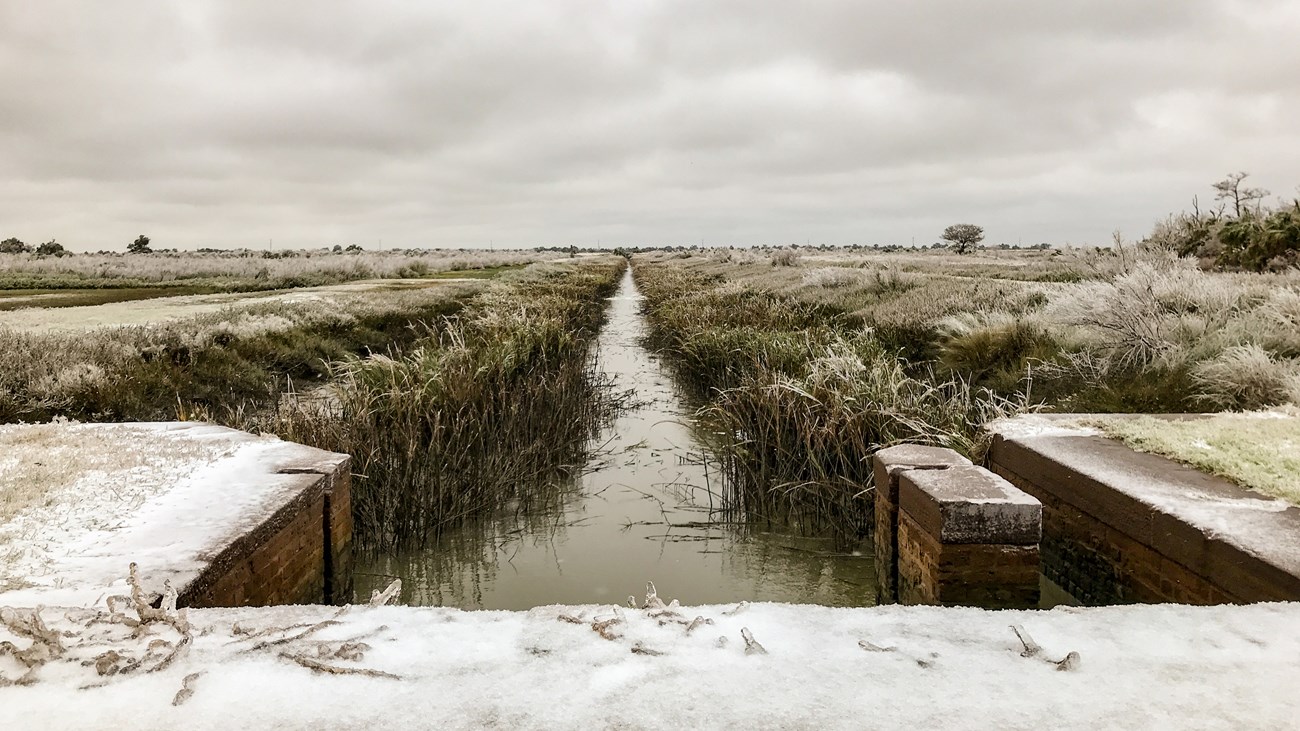The feeder canal that you see behind me is part of a network of dykes and drainage canals that were essential to the engineering plan for the island. Cockspur Island, as we see it today, is engineered land. It has been manipulated by Army Engineers and the hard labor of those enslaved at the site, in order to form a semi-solid body of land, suitable for construction of a heavy masonry fort.
Prior to this man-made manipulation, Cockspur Island looked very similar to McQueen’s Island which you can see on the other side of Highway 80. (show photo of McQueen’s Island.) It was essentially a muddy, salt marsh island with a few sandy high spots and almost no trees.
At one time it was called Peeper Island because it only peeped out during low tide.
Strategically, it was the best spot to place a fort which would protect the vital port of Savannah. From Cockspur Island, both the North and South channels of the Savannah River could be guarded against any potential enemy naval force. So, the Army made it work, through the design of dykes and drainage.
The preliminary design for the extensive dike and drainage system was primarily that of 2nd Lieutenant Robert E. Lee. (Show close up of wayside with Lee’s photo and map) Although he was the second in command (assistant engineer), the primary engineer, Samuel Babcock, was in poor health. He would later be removed from the harsh remote outpost in hopes of recovery.
An often under told aspect of our story is that Lee also relied on the expertise of enslaved workers on the project. Many of them had extensive experience constructing dikes and drainage systems for the rice fields which were prevalent throughout coastal Georgia and South Carolina. “Carolina Gold” as it was called was the top cash crop in the area prior to the invention of the cotton gin in 1793 and remained an important part of the planter economy right up until the outbreak of the American Civil War.
This feeder canal, which leads to the South channel of the Savannah River, is the only canal that feeds the moat.
This particular canal has proven vital to both the construction of the fort, and its ongoing operations.
During the construction phase, heavy materials like bricks and lumber were floated on barges from the Savannah River, through the feeder canal, in order to move them as close to the construction site as possible.
Prior to the battle, in preparation for it, the Confederate occupying force and those enslaved at the fort, floated heavy timbers called blindage up the canal in order to reinforce the interior of the fort, providing cover from incoming enemy fires.
And, perhaps the most interesting use of the feeder canal is that it served to flush raw sewage from the moat into the Savannah River when Fort Pulaski was an active Army post.
That was all part of the original design. Since we are literally right at the mouth of the Savannah River, where it meets the Atlantic, the West Point engineers decided to let the tide do the work.
All the sewage from the fort went into the moat. When the tide went out, the sewage left with it, eventually making its way to the Atlantic. The moat would be filled with fresh water when the next high tide came in.
This may sound revolting by todays standards, dumping raw sewage directly into a river. But, in the 19th century, it was really the most practical solution for field sanitation at a fort designed to hold a thousand-man garrison.
It would most likely also serve as an added deterrent for any enemy who may consider crossing the moat.

